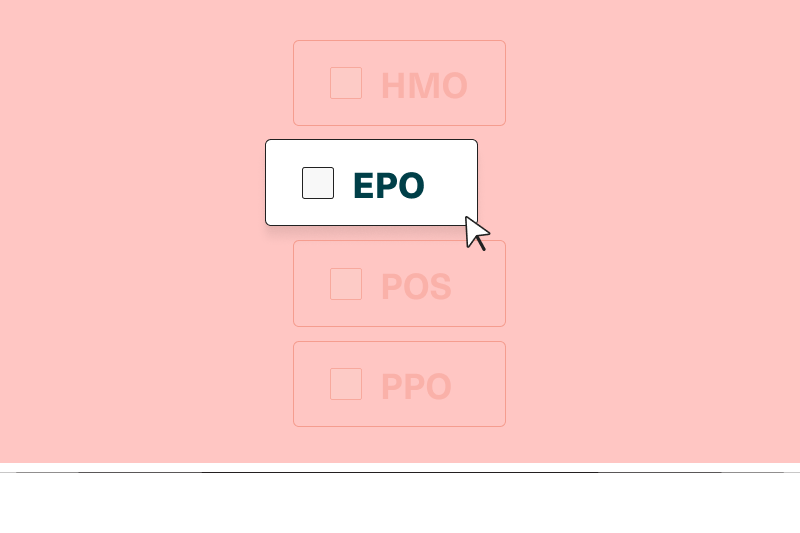The small business guide to health insurance premiums

Shopping for health insurance as a small business owner is a formidable task. You’re likely to encounter terms and concepts you’ve never heard of — and others you’ve heard of but don’t fully understand.
Health insurance premiums probably fall into the latter category. Maybe you know that a premium refers to the amount you pay for health insurance but don’t fully understand the details — like how much you should expect to pay, whether premiums are tax deductible, or how you should split the cost of health insurance with employees.
We’ve put together this guide to health insurance premiums for small business owners. In it, we answer:
- What is a premium in health insurance?
- How much are average annual health insurance premiums for small businesses?
- How does cost-sharing work?
- Are health insurance premiums tax deductible?
- How can I save money on health insurance premiums?
What is a health insurance premium?
According to healthinsurance.org, “A health insurance premium is the amount — typically billed monthly — that policyholders pay for health coverage. Policyholders must pay their monthly premiums regardless of whether they visit a doctor or use any other healthcare service.”
As a small business offering employee health insurance, you are the policyholder on behalf of your employees — which means you are responsible for paying the health plan premium to the health insurer you choose.
How much are health insurance premiums for small businesses?
According to the Kaiser Family Foundation’s (KFF) 2021 Employer Health Benefits Survey, the average annual health insurance premiums for businesses with 3 to 199 employees are:
- $7,813 for an individual
- $21,804 for a family
The cost of health insurance goes up each year. It has risen 47% in the last decade and is expected to jump 5.6% in 2023.
For most businesses, employer-sponsored health insurance is the second largest expense after payroll. While offering health coverage to employees is a significant investment, it is worth making if you want to attract good employees: According to GlassDoor, 63% of job seekers named benefits as a key factor in their job search.
It is not required by law to offer health insurance if you have fewer than 50 employees, but 56% of small firms with 3 to 49 employees do provide health benefits, according to KFF. Why? Because it is so critical for recruiting and retaining talent.
Related: How much does small business health insurance cost in 2022?
How does cost-sharing work?
Cost-sharing refers to how health insurance costs are shared between employers and employees.
Health insurance costs can be shared in two ways:
1. Sharing the cost of the health insurance premium
While some employers cover the full cost of employees’ health insurance premiums, many choose to share premium costs. In that case, the employer pays a portion of the monthly premium. The rest is deducted from employees’ paychecks before any taxes are withheld, reducing the total amount of their taxable income.
Most insurance companies offering group health plans require employers to cover at least 50% of covered employees’ premiums. However, employers are generally free to choose how much of the premium cost for dependents they want to cover.
According to KFF, cost-sharing at small firms breaks out as follows:
- Employees contribute 17% of the premium for single coverage on average, while the employer covers 83%.
- Employees contribute 37% of the premium for family coverage on average, while the employer covers 63%.
2. Sharing the cost of healthcare services
Most covered workers pay for a portion of the cost of any medical services they receive. According to KFF, the most common ways to share the cost of services are: “deductibles (an amount that must be paid before most services are covered by the plan), copayments (fixed dollar amounts), and coinsurance (a percentage of the charge for services).” The type and level of cost-sharing of healthcare services varies based on the type of plan in which employees are enrolled — in general, lower premiums upfront lead to greater cost-sharing at the time of the service.
Are health insurance premiums tax deductible?
Yes — money you put toward employees’ and their families’ premiums is considered a business expense under federal and state tax law and can be written off.
A healthcare tax credit is also available to small businesses with fewer than 25 employees that choose a group health plan through the Small Business Health Options Program (SHOP) — the online health insurance marketplace for small businesses created by the Affordable Care Act. To qualify, businesses must also pay average wages of less than $53,000 per year and cover at least half of employees’ health insurance premiums. The maximum tax credit is 50% of the premiums your small business pays.
How can I save money on health insurance premiums?
There are two main ways for small businesses to save money on health insurance premiums:
1. Choose the right health plan for your group.
For many small groups, the most well-known type of health insurance is not the most favorable option.
Insurance carriers like Blue Cross and Aetna — the big names in the industry — are best known for their fully-funded plan offerings, a type of health plan in which the monthly premium is quite high because the carrier takes on the full financial risk of your employees’ healthcare.
Instead, more and more small businesses with relatively healthy employees are opting for level-funded plans – a type of plan in which employers fund their employees’ healthcare themselves. Businesses pay a fixed monthly amount to cover employee healthcare costs and get reimbursed for whatever isn’t used. They are protected by stop-loss insurance for any costs that exceed the “level” payment.
Many level-funded plans also use money-saving reimbursement models such as fair-value reimbursement. The insurance company pays providers based on an established, predictable benchmark rather than arbitrarily negotiating their pay.
Choosing a level-funded plan saves many businesses up to 20% on health insurance premiums compared to fully-funded plans from big-name carriers.
2. Cultivate a healthier workforce.
Offer employees as many tools as possible to proactively take care of their mental and physical health and wellness. This might mean:
- Partnering with virtual care providers to make things like therapy and health coaching free and convenient for your employees
- Offering employee assistance and workplace wellness programs to employees
- Giving employees the flexibility to schedule appointments, rest, and care for themselves as needed
- Providing educational resources to help employees learn how to prioritize their health
The more empowered employees feel to prioritize proactive health and wellness, the less reactive healthcare they’ll need to use. As an employer, this can help lower your healthcare costs over time.
Sana offers level-funded health plans built specifically for small businesses. Our plans include an ecosystem of $0 healthcare options and wellness providers, so proactive healthcare is always right at your employees’ fingertips. Get a quote for your small business today.






